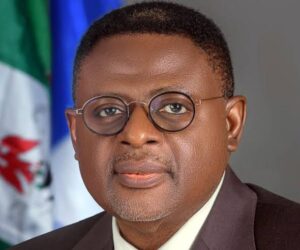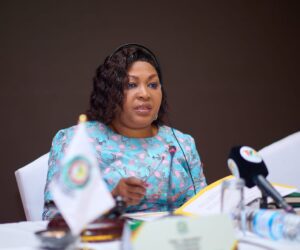On a mildly sunny morning in January, Blessing Bolaji squeezed into a packed Toyota Space Bus headed from Ogudu to Lagos Island. As the bus cut through traffic, a conversation among passengers stirred something painful in her.
Ms Bolaji joined in, recalling the long, exhausting commutes she once endured from Ogun State to her workplace in Lekki, on Lagos Island.
The daily stress eventually forced her to relocate to Lekki Phase 1.
“I thought I was making life easier,” she said, explaining her decision to move closer to her workplace in 2024. “Instead, I walked into a nightmare.”
Her new apartment came with an invisible cost—no access to clean water. The borehole produced coloured water that looked unsafe at first glance. But with rising living costs and limited options, she began using it for bathing.

“I added Dettol to the water before bathing. I even used medicated soap, but it didn’t help,” she said.
“My skin started burning and itching, and the rashes got worse. I had to stop using the water because it felt like it was killing me.”
Soon, visits to the hospital became frequent for Ms Bolaji. She was left with no choice but to switch to using sachet water for everything possible, from bathing to cooking. It was an expensive solution, but the only one she could trust.
Across Lagos Island, in neighbourhoods like Itafaji, Onola, and Adeniji Adele, the water may look clear, but residents say it carries hidden dangers.
Behind the tap’s steady trickle lies a silent threat: bacteria, biological contaminants, and a growing public health crisis.
For many residents, the burden goes beyond finances; it strikes at their dignity and well-being. PREMIUM TIMES visited several homes across the island, where residents spoke of high rents, unreliable infrastructure, and the daily struggle to live with dignity.
Parents described the cost of bathing their children with bottled water, the discomfort of rashes that wouldn’t go away, and the heartbreak of watching their families suffer. Some, unable to afford clean alternatives, said they simply “bathe in salt” to soothe their skin.
Children in pain, mothers in despair
In a modest two-bedroom flat in Itafaji, Lagos Island, a registered nurse, Enomfon Okure, fought back tears as she recounted the toll the water has taken on her three children.
“I had to shave their heads. The boils wouldn’t stop,” she said. “My youngest would cry, saying the water ‘bites.’”
Around her, hospital cards and tubes of medicated cream told the story she didn’t need to finish. For weeks, her children couldn’t sleep through the night, kept awake by the burning itch of rashes and boils.

Desperate, Ms Okure began applying calabash chalk, a traditional remedy, on their skin. But health experts warn the substance contains dangerous heavy metals like arsenic and lead.
Though commonly used for skin problems, morning sickness, or diarrhoea, there’s no scientific evidence that calabash chalk is either effective or safe.
Still, with little government help and no affordable alternatives, many parents turn to such remedies out of desperation.
But this desperation exists in a city that, on paper, should have solutions.

“I am a nurse, and I have a good understanding that the water is not safe for my children immediately after we moved in. I started applying Nzu, also known as calabash chalk or kaolin clay, to ease the pain after I had spent money on other things,” she said.
She noted that washing underwear led to severe rashes, which she could not explain.

One afternoon, her daughter returned from school in tears. “They said she looked like she was sick because of her hair,” she noted.
Another resident, Ajoke Sodiq, a trader and mother of two, watched helplessly as her daughter developed the same symptoms.
“We tried using one special soap. It’s the only one that lathers. But it didn’t stop the pain.” Her youngest daughter once scratched behind her knee until it bled.
“She cries when they bathe. I’ve stopped using the borehole altogether, but even ‘pure water’ is sometimes dirty.”
Billions budgeted, but taps stay dry
While many residents in the upscale part of Lagos Island, like Lekki, can afford to dig private boreholes, which still produce non-potable water, many in other parts of the island are not able to.
Every morning in Itafaji, Onola, and Adeniji Adele, children wake to the same routine: a scramble for water.
Not from taps but from plastic Jerry cans filled by roadside vendors, brackish boreholes, or, in desperate moments, the filthy canals that cut through Lagos Island.
Residents of Lagos Island experience these problems because the state has failed to provide municipal, potable water for most of its residents, despite huge budgetary provisions.
Between 2019 and 2023, Lagos State approved over N16.85 billion for the Lagos State Water Corporation (LSWC), according to budget records reviewed by PREMIUM TIMES.
In 2025 alone, N7.82 billion more funds were earmarked for staff salaries, operations, and capital projects.
Another N20.62 billion was allocated to expand the Adiyan Phase II Waterworks, with N16.86 billion set aside to upgrade 15 mini and micro waterworks across the state.
However, by the end of Q1 2025, less than one per cent of these funds had been released.
“It’s all paper and promises,” said Adedayo Hammed, a retired civil servant in Itafaji. “We see water in the budget, not in our homes.”
Instead, what flows through Lagos Island is disease. In the absence of piped water, families bathe and cook with saline borehole water, or buy from vendors who charge N100–N150 per Jerry can—sometimes for water stored in unwashed containers.
“There are some areas on the island that do have water, but we have never had public water here,” Ms Sodiq said, “I pay every day for dirty water.”
“The vendors? Many don’t even clean the cans,” said Rasheed Dotun, a landlord in Itafaji. “You’re buying dirt.”
Across the Adeniji Adele Canal, the crisis is visible. Human waste flows freely into the water. During heavy rains, faeces from broken soakaways wash into the same canals where children sometimes fetch water.
Cholera, saltwater, and a city on the brink
PREMIUM TIMES reported that Lagos, Nigeria’s richest state, is geographically low-lying and partly surrounded by lagoons and the Atlantic Ocean. This makes its water table shallow and vulnerable to saltwater intrusion and sewage contamination.
These risks worsen during the rainy season from April to October, when floods overwhelm the city’s inefficient drainage systems.
In 2024, the state witnessed a deadly cholera outbreak that exposed just how broken the system is. It recorded 134 deaths from 4,667 cholera cases, a grim reflection of Lagos’s water and sanitation failures.
With Lagos Island identified as the disease’s epicentre, health authorities linked the outbreak to contaminated water sources, including unregistered tiger nut drinks and unsafe boreholes.
Among the preventable casualties was Caleb Ezechimere, a young medical laboratory scientist who died barely one month into his internship at the Military Hospital, Lagos.
“He had purchased some tiger nut drinks from a vendor, and everyone who bought from the same vendor ended up in the hospital, but he didn’t make it,” his sister-in-law, Jaachi Nwagbara, a medical doctor, recalled how Mr Ezechimere died from cholera.
“It’s a great loss. Everything reminds us of him. It was a preventable death, and that’s the most painful kind of death. Preventable deaths from infectious diseases like cholera are unacceptable in the 21st century.”
Today, with a population exceeding 24 million, Lagos continues to struggle to provide safe, affordable water.
The Lagos State Water Corporation (LWC) insists improvements are underway, but access remains elusive for large swathes of the city.
Experts say Water, Sanitation, and Hygiene (WASH) is not just about infrastructure but about governance, health, and survival.
“Individual boreholes are not the solution—they’re part of the problem,” said Mekwunye Kidochukwu, a WASH expert. “Until the government fixes water and waste systems together, cholera outbreaks will continue.”
Lagos led the country in cholera infections in 2024. Kano State, officially Nigeria’s most populous, ranked 19th.
“In some places, people open septic tanks into drains that run into canals,” said Babajide Saheed, chairman of the Lagos chapter of the Nigerian Medical Association. “Then others fetch water from those same canals. Even sachet water is too expensive for many families.”
Controversial law
In a striking twist, the Lagos State government criminalised the one solution many residents rely on: unapproved boreholes.
Under the Lagos State Environmental Management Protection Law, it is illegal to drill a borehole without authorisation from the Lagos State Water Regulatory Commission (LASWARCO). Violators face a N500,000 fine, one month in prison, or both.
The UN’s Special Rapporteur on the right to water and sanitation, Léo Heller, sharply criticised the law after its passage in 2017, calling it a violation of human rights in a state where public water access had collapsed.
Mr Heller said legal measures by the government to regulate access to water are important
“However, when only 10 per cent of the population are connected to piped networks and the rest of the population rely on natural water sources for drinking water, a blanket prohibition of accessing natural water is not the way forward.”
In August 2022, LASWARCO began enforcing the law, citing sustainability. But civil society groups say the policy is disconnected from the daily reality on the ground.
“Most people here don’t even know such a law exists,” Ms Okure said. “They just want water their kids won’t fall sick from.”
“We are fighting a systemic failure with buckets and guesses. We’ve been abandoned.”
In many households, basic hygiene has become a gamble. Parents cut their children’s hair short, switch soaps, skip baths, or boil water, and they are still unsure if the water is safe.
Scientific evidence confirms danger
To understand the risks, our reporter took a borehole water sample from Lagos Island to Remaben Scientific Services Limited, a certified laboratory in Ikeja.
James Okunyi, the lab’s lead manager, confirmed the Total Dissolved Solids (TDS) level exceeded 8,500 mg/litre—17 times above the WHO’s 500 mg/litre safe limit.
“This water is not just hard. It’s chemically dangerous,” Mr Okunyi said. “It shouldn’t be used for drinking, cooking, or bathing.”
The problem, he explained, isn’t just salt. It’s a mix of minerals and contaminants: chloride, sulphates, and sodium, each damaging in high concentrations.
“We see this often on the Island. Seawater seeps underground, and poorly dug boreholes pull it up,” he said. “It’s a silent health crisis.”
Long-term exposure, he added, could lead to kidney strain, hypertension, and skin damage, especially in children.
“This water strips the skin’s barrier and invites infection,” added Rena Nosy, a Lagos-based paediatrician. “Children with sensitive skin are the worst affected.”
Lagos Water Corporation defend lapses, promises relief
When PREMIUM TIMES visited the Lagos State Water Corporation (LWC) headquarters in July, the Managing Director, Mukhtaar Tijani, was unavailable for comment.
However, a senior official, Anifowoshe Olatunbosun, who represented the MD during the meeting, offered a spirited defence of the agency’s performance and explained why piped water remains a luxury in many parts of Lagos Island.
Mr Olatunbosun admitted that while some neighbourhoods still receive supply from legacy sources like the Adiyan Phase I and Iju Waterworks, the infrastructure is overstretched and inadequate for today’s demand.
He said the much-delayed Adiyan Phase II project is now 80 per cent complete and is expected to significantly boost capacity once operational.
“We have water in the system,” he said. “But people don’t know they can connect directly.”
According to him, households can obtain a connection for a N20,000 service charge, not including materials. Yet many residents bypass the Corporation entirely, relying instead on informal vendors known locally as Mairuwa, who ironically sell water sourced from LWC infrastructure at much higher retail prices.
Part of the problem, Mr Olatunbosun suggested, lies in public perception and misinformation. “There’s a general mindset that water should be free,” he said. “But potable water costs money to treat and distribute safely.”
He listed other barriers to access, including frequent damage to underground pipes during construction projects, illegal connections, tampering by residents, and a heavy reliance on boreholes.
He warned that boreholes, especially on Lagos Island, often draw saline or contaminated water due to the low-lying coastal terrain.
“We tested water from a borehole that had been stored in a household tank for six months,” he recalled. “It was unfit for consumption. But people continue using it because that’s what they’re used to.”
Mr Olatunbosun said the Corporation has ramped up sensitisation efforts in local communities and insisted that Governor Babajide Sanwo-Olu’s administration has prioritised expanding access to clean water, even at the expense of potential revenue.
“We’re not even focused on billing right now,” he said. “The goal is to make water available and safe for everyone.”
Following the PREMIUM TIMES visit, the Corporation issued a formal statement signed by Mr Tijani, the Managing Director, addressing the status of the Adiyan II Water Treatment Plant.
According to the statement, the 70 million gallons-per-day facility, under construction for several years, is now projected to be operational by the last quarter of 2027.
Estimated to cost N5 billion, the plant is expected to complement the ageing Adiyan I, which currently delivers just three million gallons daily, grossly insufficient for a state with over 20 million residents.
READ ALSO: ANALYSIS: Saudi Arabia In Africa: the Kingdom courts the Continent
“On its completion, the majority of Lagos homes will have pipe-borne water,” Mr Tijani stated. “That is the target. We are looking at 2027.”
While the promise of improved water infrastructure offers a glimmer of hope, the timeline means millions of Lagosians, particularly those on the Island, will remain dependent on unsafe boreholes and expensive private vendors for at least two more years.
For families already grappling with the health fallout, especially children suffering daily from rashes, infections, and other water-related illnesses, 2027 is more than a date. It is a distant dream.
This reporting was completed with the support of the Centre for Journalism Innovation and Development (CJID)










